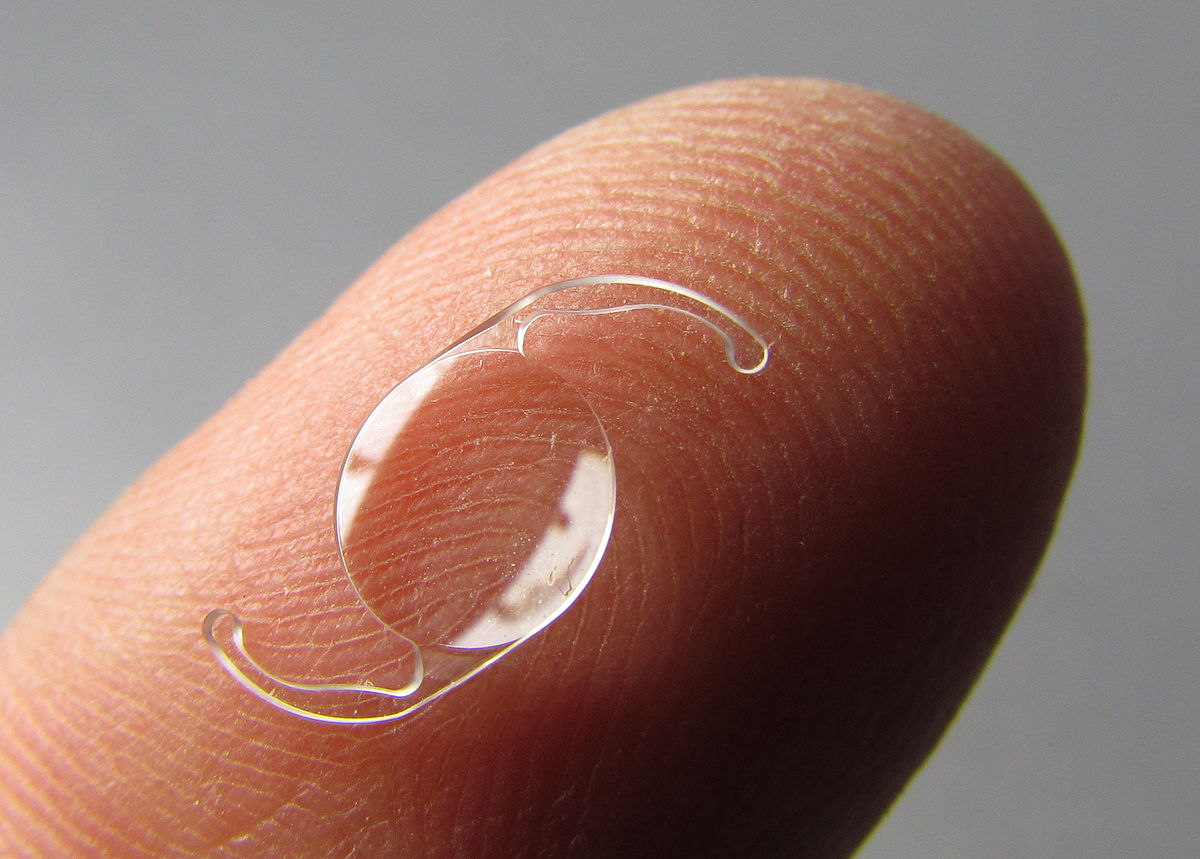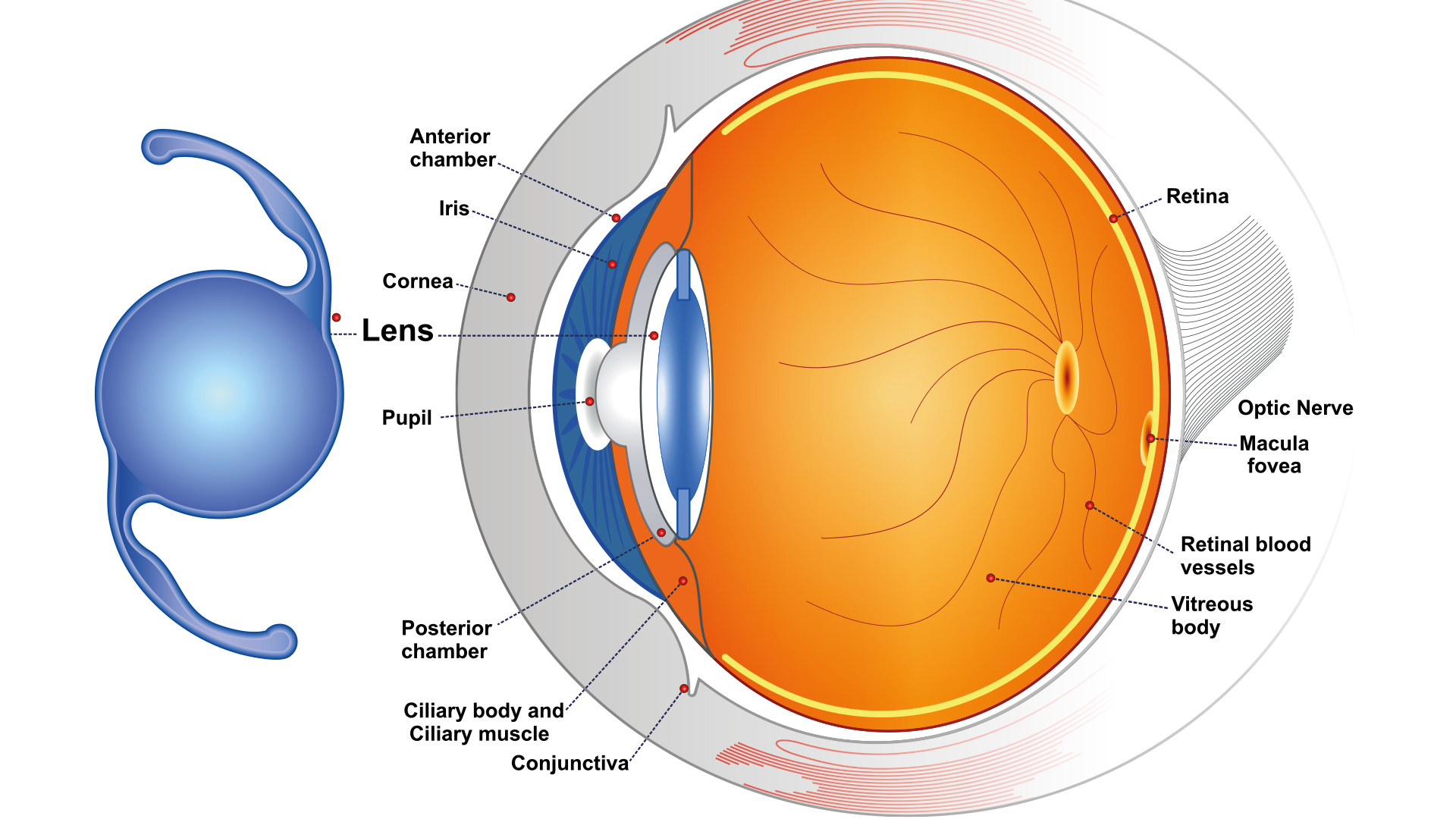
All you need to know about Multifocal Intraocular Implants
Everything You Need to Know About Trifocal Intraocular Lens Implants (Trifocal IOL)
Advances in ophthalmology have made it possible to offer more effective and less invasive solutions for the correction of various vision problems. Multifocal Intraocular Lens implants represent a major advancement in the treatment of cataracts and the correction of multifocal vision.

A multifocal IOL implant
What are Multifocal Intraocular Implants?
Multifocal intraocular lenses are medical implants designed to replace the eye's natural lens, usually damaged by cataracts. Unlike monofocal lenses that correct vision at a single distance, Multifocal Intraocular implants offer correction for three different distances: near, intermediate, and far vision.
Medical Indications
Cataract: Multifocal Intraocular Implants are particularly effective for treating advanced cataracts.
Presbyopia: They also allow for the correction of presbyopia, an age-related visual disorder.
Astigmatism, Myopia, and Hyperopia: Depending on the model, they can also correct other vision defects.
Benefits of Multifocal Intraocular Implants
Quality of Vision:
Multifocal Correction: They offer clear and sharp vision at different distances.
Light and Contrast: These lenses are known for improving contrast sensitivity and light perception.
Comfort and Quality of Life:
Independence from Glasses: Most patients no longer need glasses after the implantation.
Speed of the Procedure: The implantation generally takes less than an hour.
Safety:
Low rate of complications: Advanced technologies have made these implants safer than ever.
Adaptability: These implants are tailored to the specific needs of the patient, ensuring optimal results.
The Implantation Process

Initial Consultation: Comprehensive eye evaluation and choice of the most suitable lens.
Procedure: Generally quick procedure, often performed on an outpatient basis.
Postoperative Follow-up: Regular visits to the ophthalmologist to ensure proper integration of the implant.
The implantation of trifocal intraocular lenses represents a significant advancement in the field of ophthalmology, offering an effective solution for various vision problems. With a high success rate, a significant improvement in the quality of life, and increased safety, Multifocal Intraocular Implants position themselves as a very interesting alternative to other forms of visual correction.
If you are faced with vision problems that affect your quality of life, it may be time to discuss the options of Multifocal Intraocular Implants with your ophthalmologist.
Risks and Success Statistics
The surgery for multifocal intraocular implants has a high success rate, exceeding 95%. However, like any surgical procedure, it is not without risks such as infections, reactions to the implanted material, or refractive errors.
Is the Implant Visible?

No, the multifocal intraocular implant is completely invisible to the naked eye once implanted. It is placed inside the eye, usually behind the iris, and in no way affects the external appearance of the eye. Therefore, you can enjoy the benefits of the surgery without worrying about the aesthetic aspect.
Pricing
The prices for multifocal intraocular implants vary depending on several factors. For detailed information on pricing, Esthetic Planet offers options available on our pricing pages.
Insurance Reimbursement
Surgery for multifocal intraocular implants is generally not reimbursed by health insurances unless there is proven medical necessity. It is always best to consult your insurance to know the reimbursement conditions.
Here are some notable brands of multifocal IOLs:
Brands of Multifocal Intraocular Implants
AcrySof IQ ReSTOR (Alcon)
- Features: Apodized optics technology
- Material: Hydrophobic acrylic
- Indications: Cataract surgery, presbyopia
Tecnis Multifocal (Johnson & Johnson)
- Features: Good performance in low-light conditions
- Material: Hydrophilic acrylic
- Indications: Cataract surgery, presbyopia
FineVision (PhysIOL)
- Features: Designed to provide high-definition vision at all distances.
- Material: Hydrophilic with hydrophobic surface treatment
- Indications: Cataract surgery, presbyopia
Symfony (Johnson & Johnson)
- Features: It's an extended depth-of-focus IOL aiming to minimize halos and glares.
- Material: Hydrophobic acrylic
- Indications: Cataract surgery, presbyopia
Trulign (Bausch + Lomb)
- Features: In addition to correcting presbyopia, this lens is also designed to correct astigmatism.
- Material: Hydrophobic acrylic
- Indications: Cataract surgery, astigmatism
PanOptix (Alcon)
- Features: It's a trifocal lens, designed to provide clear vision at all distances.
- Material: Hydrophobic acrylic
- Indications: Cataract surgery, astigmatism
Crystalens (Bausch + Lomb)
- Features: It's an accommodative lens, which means it mimics the movements of the natural lens to focus vision.
- Material: Hydrophobic acrylic
- Indications: Cataract surgery
Multifocal intraocular implants (IOLs) are used in cataract surgery and also in certain refractive surgeries to replace the natural lens of the eye. They allow patients to see clearly at multiple distances, thus reducing dependence on glasses or contact lenses.